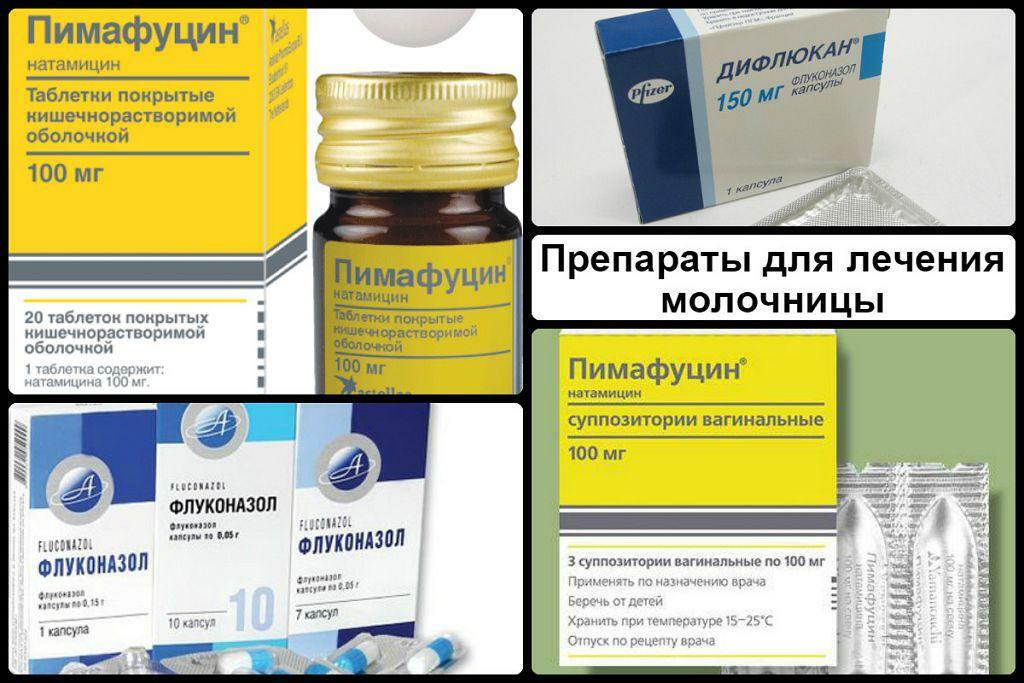Klebsiella is a fairly common microorganism, which causes a severe form of pneumonia. This makes dangerous bacteria, so the experts in suspected its presence in the body is recommended to pass a comprehensive examination, and then prescribe treatment.
The content of the article:
- 1 What is Klebsiella pneumonia
- 2 Klebsiella pneumonia in bacterial systematics
- 3 biological properties
- 4 How is Klebsiella
- 5 lesions
- 6 What diseases cause Klebsiella pneumonia
- 7 Who is most exposed to infection
-
8 symptoms of infection
- 8.1 Nasopharynx
- 8.2 Lungs
- 8.3 gastrointestinal organs
- 8.4 Genito-urinary system
- 9 Symptoms in infants
- 10 The danger for pregnant women
- 11 As klebsiellu identify at an early stage of the disease
- 12 Norms of Klebsiella pneumonia
-
13 Decoding of positive tests for klebsiellu
- 13.1 Urine
- 13.2 feces
- 13.3 Blood
- 13.4 Throat swab
- 13.5 Of cervical smear
-
14 adult treatment
- 14.1 bacteriophages
- 14.2 probiotics
- 14.3 oral rehydration
- 15 Preparations for children
- 16 Preparations for pregnant and lactating women
- 17 Folk remedies
- 18 Complications and forecasts
- 19 Video of the bacteria causing pneumonia
What is Klebsiella pneumonia
Klebsiella is a rod-shaped, Gram-negative bacteria belonging to facultative anaerobes. Experts also call her wand Friedlander, because this German scientist identified klebsiellu in 1882.

However, his first name bacterium was named after the scientist Klebs.
Klebsiella pneumonia in bacterial systematics
Klebsiella pneumonia - is a rod-shaped body of the family Enterobacteriaceae. It is considered an opportunistic, ie causes disease only under certain conditions.
If a person has sustained immunity, Klebsiella is only part of a healthy intestinal flora. But with the weakening of the body's defenses perhaps its reproduction and distribution, which leads to complications. Normally the bacteria present in the mouth, intestine, vagina in women. On the skin it is also found in small quantities.
biological properties
During the research it was found that the bacterium is easily stained with aniline dyes. It has a small size, resembles coccobacilli. The microorganism can exist alone, but more often a few hundred bacteria are found in one place.
The bacterium is stationary and does not form spores, but is capable of forming a capsule. When placing Klebsiella on a nutrient medium of the agar-agar colony formation observed round shape and gray color. They are slimy and small. When injected into the medium with lactose marked their digestion, which provides exactly pneumobaccillus.
How is Klebsiella
There are two main ways to transmit the bacteria - alimentary and airborne. The first is carried out by the use of products that have not undergone sufficient heat treatment. In this case, the microorganism enters the gastrointestinal tract, causing disorders.
The second pathway is more common, because the infected person coughs and sneezes released into the environment is quite a large amount of bacteria. It is worth noting that the patient is contagious during an exacerbation. If the disease gradually recedes, the amount allocated by the bacteria is significantly reduced, which reduces the risk of infection of others. Klebsiella not sexually transmitted.
lesions
Most of the lesions becomes the digestive and respiratory system, namely the mucous membrane of the stomach, intestines and lungs. However, the defeat of the nasopharynx, especially almonds, are also common.
More rarely diagnosed Klebsiella in the urogenital system organs, but in severe infection of the bacterium is detected in several locations, which complicates the patient's condition. It is also possible penetration of the microorganism in the conjunctiva, blood and meninges.
What diseases cause Klebsiella pneumonia
Klebsiella pneumonia - it is quite an aggressive microorganism that can provoke a variety of diseases.
Most often diagnosed by the following:
- Gastritis in acute or exacerbation of chronic disease type.
- Mucositis of the small intestine as a result of suppression of beneficial microflora.
- Bronchitis and pneumonia with severe clinical manifestations.
- Rhinitis.
- Pharyngitis, laryngitis.
- Conjunctivitis bacterial origin.
- Meningitis.
- Blood poisoning, or sepsis.
- Cystitis, urethritis.
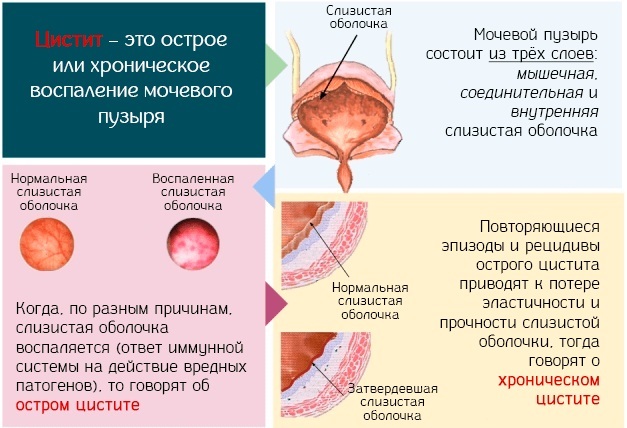
Cystitis (bladder infection) is most often diagnosed in women - Vaginitis.
Such disorders are diagnosed more often. In most cases, the microorganism is localized in the nasopharynx and lungs, but in the absence of the treatment is distributed to other organs and tissues.
Who is most exposed to infection
Infected bacteria may each person. However, the most affected people with weakened immune systems as a result of destruction of the body of HIV infection, as well as the passage of chemotherapy.
Patients diagnosed with malignant tumors, but not yet receiving cytostatics, and other means, are also at risk. Children of preschool and primary school children more likely to suffer from a microorganism.
The group risk can also be included elderly patients, pregnant women. Normally, the immune system of people more relaxed, which makes the body a favorable environment for the development of Klebsiella. Chronic stress, sleep disorders and vitamin deficiency is considered to be the most common predisposing factor and may contribute to the development of disease.
symptoms of infection
In lesions of different organs and tissues of the symptomatology of diseases characterized. In each case, an expert establishes the diagnosis with the main manifestations.
Nasopharynx
In lesions of the nasal mucosa and pharynx develop acute inflammatory process. The patient talks about scratchy and sore throat, the allocation of large amounts of mucus from the nasal passages. After some time disturbed breathing, the patient inhales via the mouth, since the nasal passages are clogged and the mucosa becomes edematous.
If struck only a sip, there is redness of mucous and enlarged tonsils. Later, severe pain occurs in the tonsils during the inspection, you can see small whitish spots. It speaks about the development of purulent inflammation. Mucous membranes become swollen, the patient's appetite is getting worse, he even liquid can not eat without pain.
Body temperature can rise to critical levels remain normal or, depending on the individual. weakness, lethargy, headache can be isolated from the general symptoms.
Lungs
Klebsiella when released into the lungs provokes pneumonia. This inflammatory process which is characterized by the formation of a body of single or multiple lesions.
In this case, the patient says about the deterioration of the general condition and the presence of other signs of the disease:
- Critical fever.
- Weakness, chills, pain in the muscles.
- Discomfort in the lungs when attempting to take a deep breath and exhale.
- Unproductive cough. Sometimes when you cough allocated quite a large number of sputum greenish or yellowish color. It should also be noted that when expectoration patient feels discomfort or even pain in the lungs.
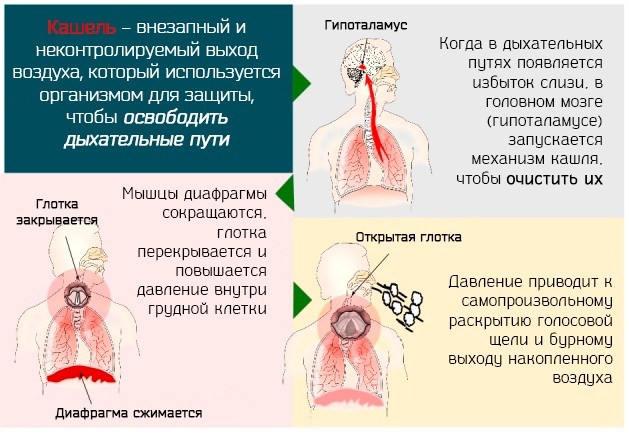
- Lack of appetite.
- Intensive work of sweat glands.
- Nausea and vomiting.
- Headache and dizziness.
- A sleep disorder, which is constantly interrupted due to severe coughing.
With long-term course of the disease may develop respiratory failure. The patient speaks of shortness of breath that occurs not only in the load, but also in times of great excitement. Without treatment, it will certainly lead to the development of complications.
gastrointestinal organs
The penetration of bacteria in the digestive tract provokes inflammation of the lining of the stomach and intestines. In this case, the patient says about the pain in the epigastric pain, indigestion and nausea. After a while, joined by other symptoms as vomiting, loose stools, flatulence.
Abdominal cramps talk about the progression of the disease. A person can feel a constant discomfort, but more often it occurs after ingestion of food or liquid. the patient's appetite is getting worse, there is a weakness and apathy.
In severe pathology of inflammation can provoke the development of gastric ulcer or ulcerative colitis. Such a state is considered dangerous because it can lead to perforation body wall and the development of peritonitis.
Genito-urinary system
After contact with Klebsiella in organs of the urogenital system is marked inflammation development. Women talk about discomfort in the vagina, unusual discharges. Patients of different sexes is marked increased frequency of urination, pain in the lower abdomen.
With the penetration of microorganisms in the urinary bladder during urination marked pain, color change of urine, the appearance therein impurities pus. Usually complications of these diseases can be avoided if you start early treatment.
Symptoms in infants
In case of contact activation in the organism Klebsiella grudnichka symptoms are not very different from that observed in adults. However, all manifestations are more pronounced, the body temperature is almost always rises to the critical exponents.
In addition, in infants are more pronounced symptoms of intoxication. Nausea and vomiting is accompanied by loose stools, there are signs of dehydration. Kid becomes restless, often cries and refuses to eat.
After contact microorganisms on the mucosa of age develop conjunctivitis. Notes zakisaniya eyes tearing. The child is constantly trying to rub your eyes to remove the accumulated allocation and facilitate the movement of the eyelids. It should be noted that the treatment in infants should be started immediately and the recovery will be faster than in adults.
The danger for pregnant women
Klebsiella pneumonia - is a dangerous bacterium for women who bear a child. During this period, the presence in the body site of infection may adversely affect the pregnancy and fetal development.
When running the form of pneumonia or penetration of bacteria on the nasal mucosa, digestive tract, urogenital system is the body's waste products poison pathogens.
This has a negative impact on a woman's state of health and pregnancy. It should also be noted that the treatment with antibiotics is not recommended at this time, because it can lead to defects in the child's development.
That is why the detection of Klebsiella used less effective but relatively safe means, which can not always cope with the symptoms.
As klebsiellu identify at an early stage of the disease
When activated, the bacteria in the body the symptoms do not appear immediately. For 1-2 weeks, the patient may not be aware of the development of the disease.
In order to identify at an early stage of the microorganism used several methods:
- Bacteriological urine culture.
- stool analysis of the patient.
- Blood analysis and its serum for the determination of immune response.
- Smear from the throat and nasal passages.
- The study of a smear taken from the cervical canal.
If you suspect the presence of bacteria in the lung X-ray shows the body of research that enables to detect focus.
Norms of Klebsiella pneumonia
Normally, a few days after the birth of his intestine, mouth and other tissues appears Klebsiella. The number of bacteria must not exceed 10 is 5 degrees.
In adults, the rate should not be higher than 8, 5 degrees. When exceeding the permissible value there is a violation of the microflora and the development of inflammatory diseases. In each case, a specialist decides individually, because sometimes exceeded the indicator is not a sign of developing the disease.
Decoding of positive tests for klebsiellu
In the study of biological material specialists to compare these data with the valid regulations, which allows to establish the diagnosis and the extent of disrepair.
Urine
In the study of the patient's urine taken into account several factors. In the field of view may be the presence of single Klebsiella. If the figure is much higher than normal, increasing the chance of infection.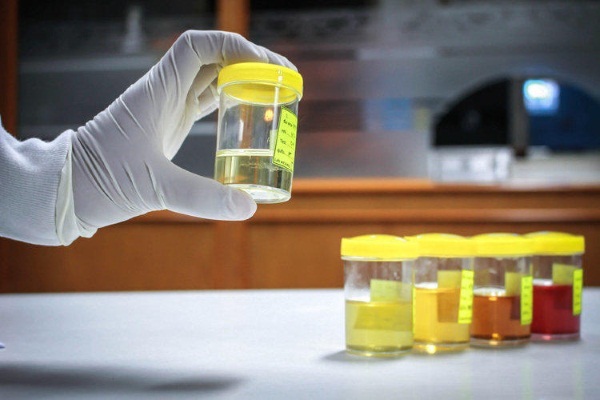
This takes into account the number of leukocytes and the squamous epithelium. Klebsiella their number also increases with the infection.
feces
If the patient is detected in the feces of Klebsiella in an amount of more than 105 units per 1 g of the biological material can speak of disease development. Typically, the number of bacteria growth occurs gradually, and there are no signs of a lesion.
With the rapid propagation of microorganisms show signs of intoxication and inflammation.
Blood
Usually in excess of 10 indicators in 5 degree we can talk about the patient Klebsiella infection. Furthermore, in the investigation of blood serum noted the appearance of atypical antibodies are produced in response to penetration of the body of pathogenic bacteria.
Throat swab
Normally, in a smear should not be bacteria, because they are present in the oral cavity in a minimum amount which can not be fixed in the study.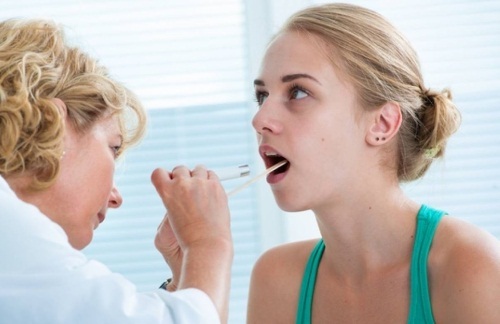
When mucosal lesion microorganism contained in the material in a moderate or large amount.
Of cervical smear
Upon detection of Klebsiella pneumoniae in a biological material can talk about the development of serious diseases. Normally, in this part of the female reproductive system bacteria should be absent.
That is why any number of sticks Friedlander considered the reason for the additional purpose of diagnosis and treatment.
adult treatment
Klebsiella pneumonia - it is quite stable in the environment of microorganisms. To destroy it requires multiple heat treatment. However eliminate bacterium in the body with drugs from different groups.
bacteriophages
Called bacteriophages specific microorganisms which are able to absorb a certain type pathogens without disturbing the microflora of the organism and not adversely affecting the authorities.
| Name | application | Contraindications |
| Klebsiella pneumoniae Bacteriophage purified | It has an effect due to the content of the filtrate fagolizata Klebsiella pneumonia. Available in a yellow solution, packaged in bottles of 10 and 20 ml. Appointed by the bacterium in lesions of any organ or system. Daily rate of 30-40 ml, it must be divided into 3 doses. To use the medicine inside before a meal. The duration of treatment of 10 to 20 days. | The only contraindication is considered to be intolerant of the drug component. |
| Piobakteriofag polyvalent purified | Contains a part of fagolizaty Klebsiella, Streptococcus Staphylococcus, Pseudomonas aeruginosa and other dangerous bacteria, so it has complex effects. Used in the detection of Klebsiella in any biological material. Taking into solution is necessary before a meal to 15 mL of 1 to 3 times a day depending on the severity of the condition. Duration of treatment - 1-3 weeks. | Contraindications to the use of funds does not exist. |

These drugs are considered the safest because they have no contraindications and no adverse effects on the body.
probiotics
Means for normalization of intestinal microflora bacteria used in the defeat of the digestive tract and at the same time taking antibiotics.
The most effective are:
- Enterol - capsules, allowing normalize microflora and improve the overall condition of the patient due to the content of lyophilized enterobacteria. Administered to patients of different ages 1 capsule 2 times a day for 7 days. The tool is not used if you are allergic to its components, to treat patients up to 1 year. With its carefully prescribed during pregnancy and lactation
-
Linex - popular drug in capsule form, used in dysbacteriosis and intestinal lesions Klebsiella. The capsules contain freeze-dried lactic acid bacteria that have a beneficial effect on the flora. Appointed by the course of 7-10 days, it is necessary to use 1 capsule 3 times a day. It is contraindicated for those allergic to its components.

These drugs are considered safe and effective, help to cope with severe dysbiosis, eliminate the associated symptoms.
oral rehydration
Oral rehydration therapy is indicated for severe dysbiosis, pneumonia and other diseases involving fever, appetite loss resulting in activation of the pathogenic organism bacteria.
Typically solutions are administered intravenously with a dropper, since ingestion brings result. The most commonly prescribed Ringer's solution, Reamberin. They have the form of a transparent liquid, packaged in bottles of 200 or 400 ml. The day the patient is administered 200 to 400 ml of the product to recover water and salt balance.
Medicines containing calcium ions and potassium, and salts necessary to maintain the health of the internal environment. The course of treatment lasts for at least one week, the procedure is carried out 1-2 times a day. It is contraindicated if you are hypersensitive components.
Preparations for children
With the defeat of the bacteria body of the child used the drug from the same groups as the treatment for adults, but the dosage is different.
-
bifiform - capsules for normalization of intestinal microflora, contain beneficial bacteria as a dry lyophilisate. Children from 2 years are designated by 2 capsules per day for 5-7 days. The facility has no contraindications, except intolerance of its components.
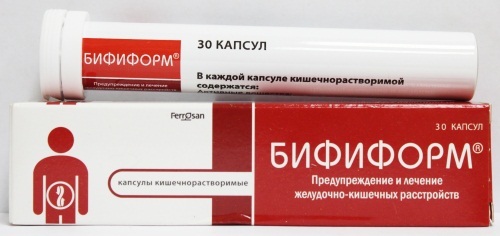
- Bacteriophage Klebsiella pneumonia purified and used to treat children from birth. Daily norm ranges 5-20 ml, depending on the child's age. Share dose should be in the 2-3 reception. Duration of treatment - from 10 to 20 days. The drug has no contraindications.
- augmentin - an antibiotic based on the clavulanic acid and amoxicillin. Assists in the defeat of Klebsiella lung, digestive tract, conjunctiva. The powder is used to make a slurry, which is given to children from 3 years old. The dosage is 25 / 3.6 mg per 1 kg body weight of the child, in each case calculated individually. Duration of treatment - 3-10 days, depending on the state of neglect.
Agent is not used for penicillin allergy, phenylketonuria, severe lesions of the kidney and liver. Children under 3 months of medication is also not assigned.
Preparations for pregnant and lactating women
For women during pregnancy, lactation bacterium defeat dangerous. The therapy uses only bacteriophages and probiotics, which help to eliminate the symptoms with minimal harm to the mother and child health.
Linex and Bifiform appointed on 1 capsule 3 times daily for 5 days. Klebsiella pneumoniae bacteriophage is used for at least 10 consecutive days. The woman should take 15 ml 3 times per day.
The only contraindication to therapy is considered to be allergic to components of assets. It should be noted that other drugs are used only in severe cases. When the condition of the patient threatens her life.
Folk remedies
Recipes of alternative medicine will not help to completely destroy the bacteria in the body, but are often used to relieve symptoms.
Camomile drug has antiseptic and anti-inflammatory properties, helps eliminate acute symptoms of the digestive tract upon penetration bacteria.
It is possible to prepare 3 g of the dry raw material and 300 ml of boiled water, 20 minutes, take 150 ml 3 times per day for 5-7 days. The recipe is only used for the treatment of adults, is contraindicated in pregnancy.
A decoction of rose hips - a good way to eliminate bacteria localized in the urogenital region. In addition, the agent activates the kidney that stimulates the excretion of toxins produced by microorganisms.
For broth must boil 50g fruit in 1 liter of water 5-8 min. After that means should be filtered, and take 200 ml, morning and evening, duration of the course - 10 days.
Recipe allowed to use during pregnancy, as well as for the treatment of children 3 years of age. The daily dosage for them should not exceed 100 ml, and the duration of the course - 7 days. Any folk remedy may only be used after consulting a doctor.
Complications and forecasts
With timely initiation of therapy for the patient prognosis is favorable. After treatment restores all organs and systems, general condition normalized. In the absence of examination and treatment of the disease becomes chronic, then complications develop.
The most common is respiratory failure, chronic obstructive pulmonary disease, gastritis. In addition, the possible development of gastric ulcer, severe pyelonephritis and enteritis. On the part of nasal symptoms of chronic pharyngitis, tonsillitis and laryngitis. Such complications are considered the most common.
Klebsiella - dangerous opportunistic bacterium, provokes pneumonia and other diseases. This often leads to complications, however at the first sign activation microorganism refer to the specialist.
Registration of the article: Vladimir the Great
Video of the bacteria causing pneumonia
Malyshev will talk about the origin of the pneumonia:


